Understanding Reading Comprehension
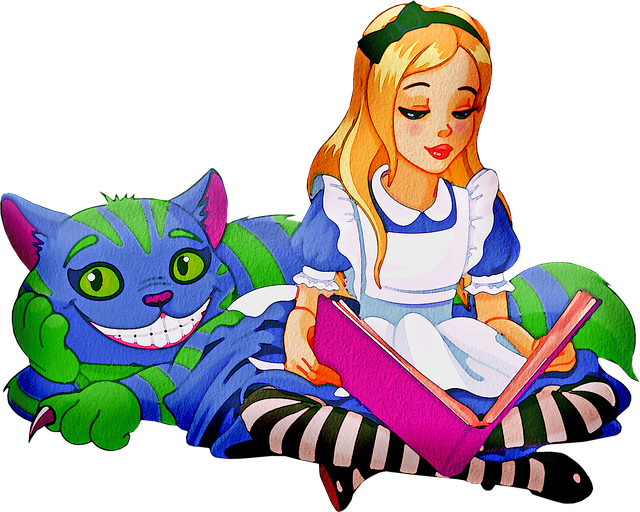
What is Reading Comprehension?
Reading comprehension is being able to process text and understand its meaning.
How is Reading Comprehension Taught?
Reading Comprehension is incorporated throughout each lesson as students learn reading comprehension skills, practice reading a weekly story, complete weekly story retells on the weekly story, and participate in a weekly independent reading activity. Story retell recordings allow students to consistently practice identifying key story elements from their weekly story (characters, setting, problem, events, solution/ending) orally by recording themselves retelling the story, and submitting the recording to the teacher. Each week students must also select a book to read at their reading level for independent reading. Teachers assess the reading level of the student throughout the course through a running record reading assessment. They must keep a log of what they read and answer questions about the book they read that week to demonstrate comprehension. In grades 1-3 reading comprehension quizzes are added to each module to assess how well students comprehended the weekly story.
Examples of how reading comprehension is taught in the K-3 Language Arts courses are below:
Explicit Instruction:
Students will meet with their teacher in synchronous sessions. The teacher will use a scripted PowerPoint to explicitly teach the skills being taught for each module, this includes reading comprehension. A sample of scripted PowerPoints is below. In the Language Arts 1B Module 32 Powerpoint, students are taught about sequencing the events of a story using their weekly story. In the Language Arts KB Module 26 Powerpoint, the teacher takes the students through the elements of the weekly story.
Language Arts 1B Module 32 Synchronous Session
Language Arts KB Module 26 Synchronous Session
Another example of explicit instruction is through videos within each lesson. A sample video from Language Arts 1A Module 1 is below:
Interactive Self Check Activities:
In addition to explicit instruction, reading comprehension is also taught through interactive self-check activities within the lesson. These activities provide students with practice and immediate feedback. One example of an interactive self-check activity is in the image below. After learning about informational text students check their knowledge to see if they can recognize the difference between informational or story text.
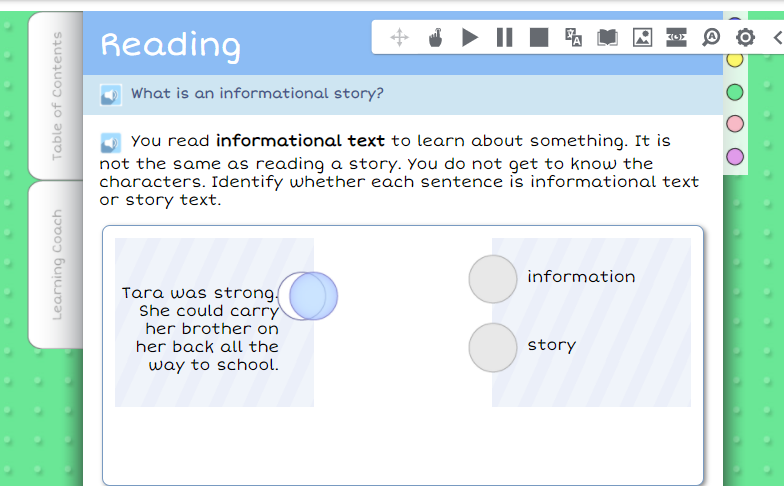
Reading Text
Students also learn about reading comprehension through reading text within the lesson. For example, in the lesson below students learn about character traits.

How do students practice Reading Comprehension?
Students practice their reading comprehension skills through interactive self-check activities as shown above and also through assignments and weekly stories. Two examples of a reading comprehension assignment are below. In the first assignment, second-grade students are asked to answer questions about the weekly story. In the second assignment, kindergarten students are asked to draw the elements of the story they read that week.
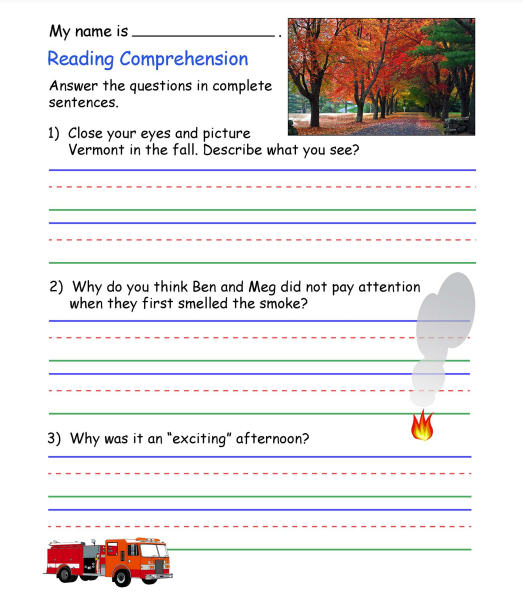

Each week students practice reading a weekly story, students complete assignments to demonstrate their comprehension of the weekly story such as completing a story retell. An example of a weekly story is below from Language Arts KB Module 30.
Below is an example of the directions for the Story Retell activity with a rubric included to show how the student is graded on it and the story retell map the students use to help them complete the story retell.
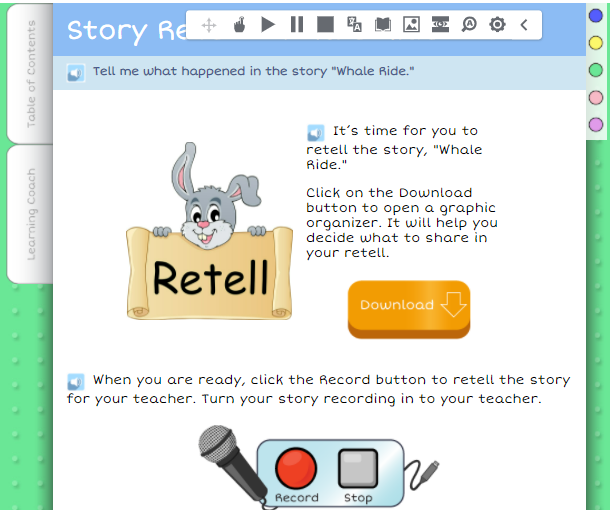
Independent Reading
Story Retell Rubric
Each week, students are assigned a “story retell”, where they retell the story they read in their own words. This is worth 10 points and will be scored as outlined in this rubric:
| Details | Posible Points | Student Score | |
|---|---|---|---|
| Story Elements | Did the students share story elements as learned (Characters, setting, problem and solution, events, solution, main idea) | 3* | |
| Accuracy | Was the information the student shared from the story accurate? | 3* | |
| Details | How many details did the student share? | 3* | |
| Prompting | If no prompting was received during retell, the student earns 1 point. | 1 |
* Where 3 points are possible, students are scored as follows:
0 = Omitted or incorrect
1 = Incomplete
2 = Partial
3 = Complete
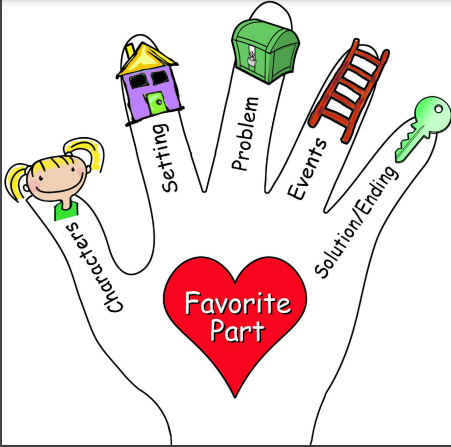
In addition to the weekly story students read, students also are expected to choose an independent reading book to practice reading each week. Teachers assess students to find out their reading level and students must choose books to read at their reading level. Students are taught how to choose a just right book and complete an assignment each week about the book they selected. Below are links to the Independent Reading weekly assignments.
How is Reading Comprehension Assessed?
Reading Comprehension is assessed in a variety of ways throughout each course.
Weekly Synchronous Sessions
Students are informally assessed when their teacher is teaching the concepts during a synchronous session. As they teach, they will observe their students to ensure they are following along and demonstrating the concepts being taught. If they notice a student is not demonstrating understanding of the concept, they will reteach and make corrections as needed.
Written Benchmark Assessments
Every 9 modules students take a Written Benchmark Assessment students may apply their reading comprehension skills in these assessments.
Reading Comprehension Quizzes
In grades, 1-3 students take a reading comprehension quiz on the weekly story in each module.
